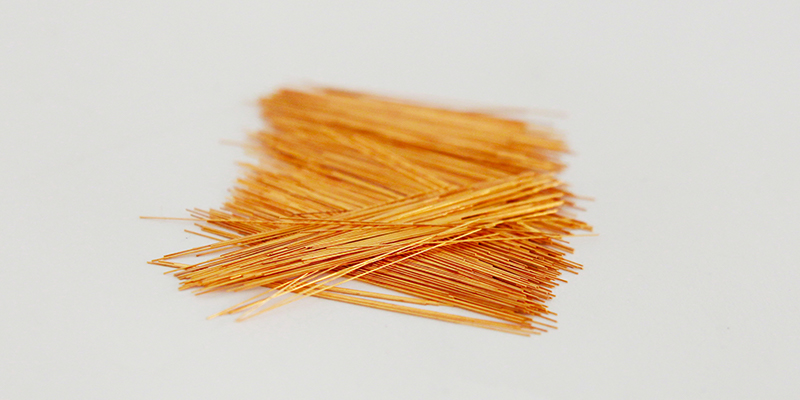This comprehensive article delves into every aspect of carbon brushes and brush holders – two fundamental components of electric motors. From their basic definitions to their historical evolution, varied types, functionality, selection criteria, and maintenance methods, every facet is explored thoroughly. The piece culminates with a futuristic look at ongoing advancements and their potential impacts, followed by a separate section dedicated to frequently asked questions about these components. The overarching aim is to shed light on their criticality in machines we rely on every day, regardless of complexity or size.
Introduction to Carbon Brushes and Brush Holders
Understanding the Essentials: What Are Carbon Brushes and Brush Holders?
At the heart of many electrical motors and generators lies a humble but crucial component: the carbon brush. Carbon brushes are high-grade carbon blocks designed to transmit electrical current between stationary wires and the rotating part of a motor commonly known as the rotor. Brush holders, on the other hand, are the supportive casings that house carbon brushes, ensuring they maintain the correct tension and alignment against the moving parts. These components may be small, but they are instrumental in the functionality of a wide range of electrical devices.
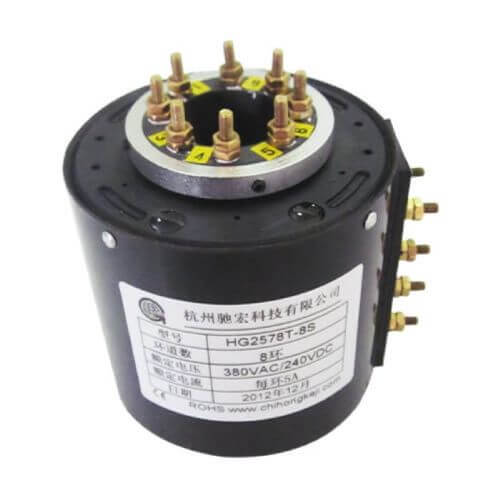
The Vital Function of Carbon Brushes in Electric Motors
To appreciate the significance of carbon brushes, one must delve into the inner workings of electric motors. As electricity enters the motor, carbon brushes play the pivotal role of conveying the current to the rotating commutator or slip rings. This transfer of electricity allows the motor to convert electrical energy into mechanical power efficiently. To illustrate, imagine an electric vehicle’s motor — the carbon brushes within it are what enable the vehicle’s wheels to spin and propel the car forward.
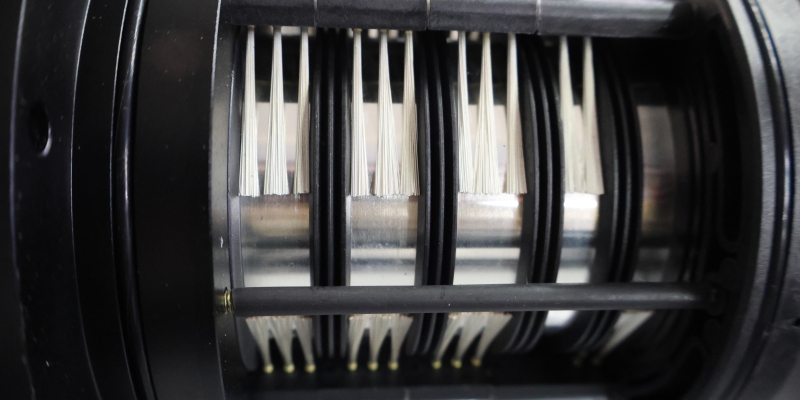
Securing Performance: The Importance of Brush Holders
Brush holders may not be as well-recognized as carbon brushes, but their role is equally vital in ensuring the smooth operation of a motor. These components anchor the brushes in place, allowing for a steady conductive path and mitigating excessive wear or sparking. A properly designed brush holder is tailored to support the carbon brush, accommodating factors such as the brush’s size and spring pressure requirements. It’s like a tailored suit: without a perfect fit, the outcome is less than ideal. Brush holders are also pivotal in facilitating easy access to the brushes for maintenance or replacement, a feature that’s essential in industrial contexts where downtime equates to lost productivity.
The History of Carbon Brushes and Brush Holders
Tracing the Evolution: The Development of Carbon Brushes and Brush Holders
The story of carbon brushes and brush holders is intertwined with the narrative of electricity’s increasing role in our day-to-day lives. In the early stages of electric motor development, various materials such as copper and brass were tried for transmitting current to the rotating components. However, their high melting points and the resultant heat generation posed substantial issues.
The emergence of carbon as a superior material for this task wasn’t an immediate insight. But with its excellent thermal conductivity properties, lower melting point, and ideal frictional characteristics, carbon became a mainstay in motor and generator design by the late 1800s. The evolution of brush holders followed suit, mirroring advances in design and materials, starting from rudimentary clamps to today’s complex, engineered holders that balance pressure, heat, and alignment for optimal endurance and efficiency.
Breakthroughs and Improvements: Major Milestones in The History of Carbon Brushes and Brush Holders
We cannot appreciate the current state of carbon brushes and brush holders without acknowledging significant milestones and improvements over the years. In the early 20th century, researchers began to mix copper with carbon to enhance conductivity and improve the lifespan of brushes. This innovation drastically reduced the wear rate of carbon brushes in high-energy motors, signifying a major breakthrough in the industry.
In the following decades, there were considerable advancements in brush holder design as well. The introduction of constant-force spring designs offered a remedy for the problem of inconsistent contact pressure as the brush wore down. This meant that brushes could perform optimally for longer, with less maintenance required.
The tradition of innovation continues till date, as researchers explore the potential of new carbon composite materials and brush holder designs to enable more efficient and robust motors, and generators. For example, carbon-graphite brushes – a product of continuous exploration and testing – have shown promising results in managing the demanding requirements of modern, high-speed motors.
A comprehensive look at the development and evolution of carbon brushes and brush holders in this way highlights the resolute progress that has been made since their inception. It underscores how each enhancement has paved the way for greater efficiency and durability in electric motors and generators, proliferating across myriad practical applications in our daily lives.
Types of Carbon Brushes and Brush Holders
The Spectrum of Choices: Different Kinds of Carbon Brushes for Motors
When considering carbon brushes for electric motors, it’s essential to understand that these components come in a variety of shapes, sizes, materials, and grades. The choice significantly relies on the requirements of the specific motor or generator application.
Regarding materials, while all brushes are primarily composed of carbon, they also contain other elements that can drastically affect their performance. Some brushes, for instance, have a high copper content which makes them suitable for relatively low-speed applications requiring high current densities. Others may contain graphite to handle higher speeds and reduced current densities, whereas some with a mix of carbon and graphite can serve a wide array of applications.
In terms of shape, the majority are rectangular, but they can also be round or contoured depending on the motor’s design. The size and grade, on the other hand, are equally as crucial – larger brushes are employed for bigger motors while the grade (hard, medium, or soft) influences the brush’s ability to withstand different operating environments.
The Role of Design: Variances in Brush Holders and Their Characteristics
Selecting a suitable brush holder is as essential as choosing the correct carbon brush. Brush holders come in an assortment of designs, each intended to cater to distinct motor or generator needs:
Single-box holders house one brush per box, making maintenance easier by reducing downtime – these are particularly suited to larger motors.
Multi-box holders, on the other hand, contain multiple brushes, making them appropriate for smaller motors where space constraints may be a concern.
Open and closed-style brush holders cater to specific environmental factors – for example, closed types are excellent for preventing damage from dust and external particles, especially in adverse operating environments.
To add nuance, brush holders also vary in their pressure system designs – some employ constant-force springs for consistent brush contact pressure, while others use standard spring designs for simpler, lower-demand applications.
The goal in shedding light on these variations is to underline that carbon brushes and brush holders, far from being one-size-fits-all solutions, are actually finely-tuned components individually crafted to meet the unique demands of every motor and generator. Understanding what each type offers will assist users in making informed decisions – be it for household applications or industrial machinery.
Understanding the Functionality of Carbon Brushes and Brush Holders
Delving Deeper: How Carbon Brushes and Brush Holders Operate in a Motor System
Carbon brushes and brush holders serve as the vital link between the stationary and rotating parts of an electric motor. The mechanics of it, while elegant, are relatively straightforward. When a motor spins, its rotor, which is attached to the output shaft, turns with it. The carbon brushes are fixed in position by the brush holders and press against the moving part of the rotor — either the commutator on a DC motor or slip rings on an AC motor.
As electricity enters the motor, it must transfer to the rotating shaft to create the electromagnetic forces needed to turn the rotor. The carbon brushes carry the current from the static wiring (via brush holders) to the rotating commutator or slip rings, and hence to the winding of the rotor. By ‘brushing’ against the rotating surface, they maintain an electrical contact necessary for operation.
One common question is why carbon is used for these brushes. Carbon is chosen for its balance of conductivity, durability, and low friction; it’s both able to conduct electrical current and withstand the physical wear resulting from contact with the spinning rotor.
Embracing Versatility: The Wide Range of Applications for Carbon Brushes and Brush Holders
The use of carbon brushes and brush holders spans a diverse array of machinery, demonstrating their versatility and essential role in electric motor operation. These components are found in small devices like handheld power tools where their size and efficiency are paramount. They also play crucial roles in household appliances like washing machines and vacuum cleaners — unsung heroes that drive our day-to-day conveniences.
Extending beyond the confines of the home, carbon brushes are an integral part of the automotive industry, featuring predominantly in starters and alternators of cars. Expanding even further, these components are mission-critical in industrial electric motors, including those used in electric pumps, conveyors, and large industrial fans.
Another area where carbon brushes leave their mark is within the realm of transportation. Trains, trams, and even some types of electric buses rely on carbon brushes and brush holders to transfer electrical current to their motors, enabling the movement of millions of people every day.
To showcase real-world applications, consider the amusement industry: roller coasters are striking examples where carbon brushes are used to ensure high performance and reliability in the motors that haul the coaster cars up an incline before a thrilling descent.
Each application presents unique challenges — from high-speed, low-torque scenarios in automotive alternators to low-speed, high-torque demands in heavy-lifting machinery. The versatility of carbon brushes and brush holders to adapt and meet the demands of such diverse machinery underscores their pivotal role in modern technology.
In conclusion, carbon brushes and brush holders might appear insignificant in the grand scheme of a motor system but understanding their functionality demonstrates their indispensable role. Addressing common queries around these components not only highlights their importance but also empowers users and technicians to better care for and maintain the systems that rely on them.
Choosing the Right Carbon Brushes and Brush Holders
The Craft of Selection: Factors Influencing the Choice of Carbon Brushes and Holders
Picking the correct type of carbon brush and brush holder for any electric machinery is a meticulous process where several factors must be assessed to ensure optimal performance and longevity. It’s a decision matrix that ranges from the type of machinery to its operating conditions.
For instance, the type of machinery is paramount. Does the equipment require a high-current, low-speed solution such as in wind turbines? Or is it a high-speed, low-torque scenario like in an automotive alternator? Different machine applications will invariably affect the brush composition and grade needed, with each variation designed to offer the best performance under particular conditions.
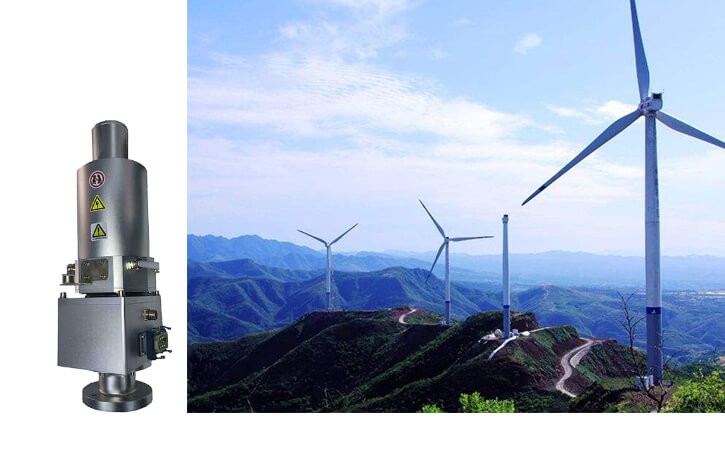
Material consideration is another cornerstone. Carbon brushes with metal additives are known for excellent conductivity and thus are suitable for high-power, low-voltage applications. Pure graphite brushes, conversely, might be the go-to choice for high-voltage, low-power scenarios due to their lubricating properties, which minimize wear.
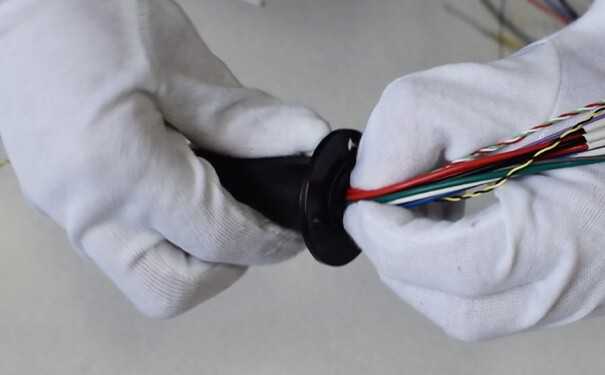
When it comes to operating conditions, several environmental factors such as temperature, humidity, and the presence of contaminants can impact the choice. For operations under extreme temperatures or in corrosive environments, brushes and holders made from materials resistant to such conditions are necessary.
Navigating Through Queries: Addressing Consumer Concerns
Choosing the right components is undoubtedly complex, and consumers often have concerns and queries that require clear and concise answers. Here are a few commonly addressed points:
- “How often do carbon brushes need replacement?” This question varies greatly depending on usage and conditions. Regular inspection is key, with a rule of thumb being to check brushes after every 1000 hours of operation in standard conditions.
- “Can any carbon brush fit into any brush holder?” Compatibility is crucial. Not all brushes can fit into any holder due to variations in size and design. It is essential to check specifications or consult a professional.
- “Does a pricier brush ensure a longer lifespan?” Not necessarily. The cost is often related to material quality; however, the “right” brush is the one that matches specific application needs, which isn’t always the most expensive option.
To illustrate this with a real-world case visit any major manufacturing plant — the selection process will often involve on-site assessments and consultations with engineers to determine the ideal brush and holder. This level of customization ensures a maximized lifespan and efficiency for the motors in their production line.
Maintenance and Replacement of Carbon Brushes and Brush Holders
The Art of Upkeep: Methods and Techniques
Proper maintenance of carbon brushes and brush holders is not just a technical necessity; it’s an art that can extend the life of electric motors and prevent costly downtime. Here’s how these critical yet often overlooked components can be kept in optimal condition:
Regular Inspection: The first step in maintenance is frequently examining carbon brushes and holders for wear and tearwear and tear. Look for signs such as irregular wear patterns, discoloration, or a decrease in brush length.
Cleanliness is Key: Ensure that the brush holder and immediate environment are free from contaminants. Dust and debris can obstruct the brush’s movement within the holder, causing arcing and excessive wear.
Smooth Operation: Brushes must slide freely within the holder without sticking. Sticking can result in poor electrical contact and sparking. Applying a specialized brush seating compound can aid in achieving a perfect fit.
Sustaining Pressure: Constant spring pressure is imperative for maintaining good electrical contact. Verify that the springs maintain the manufacturer’s specified pressure to prevent arcing and uneven wear.
Lubrication Checks: While carbon brushes are self-lubricating to a degree, slip rings and commutators often need their surface condition and lubrication monitored carefully to avoid brush damage.
Recognizing Failure: Warning Signs and Replacement Indicators
Knowing when to replace carbon brushes and holders is critical to prevent motor failure. Here’s what to look out for:
Excessive Wear: A general guide is to replace carbon brushes when they reach about one-quarter of their original length, or follow the manufacturer’s recommendation.
Spark Patrol: Excessive sparking from the brush-commutator interface is a clear indicator of issues. Causes can range from worn brushes to surface contamination.
Damage Signals: Keep an eye out for chipping, cracking, or other physical damages to the brushes or holders, which can indicate the necessity for replacement.
Performance Monitoring: An unexpected reduction in motor performance, such as lower speeds or loss of power, could suggest that brushes or holders need to be checked.
Step-by-Step Guide: DIY Brush and Holder Replacement
Replacing carbon brushes and holders need not be daunting. Here are the DIY steps to get you through the process:
Step 1: Safety First — Ensure the power supply to the motor is disconnected to prevent accidental starts or electrical shocks.
Step 2: Access and Assess — Open the motor housing and assess the condition of the brushes and holders. Look for the signs discussed earlier to determine if replacements are necessary.
Step 3: Remove Old Components — Carefully extract the worn brushes from the holders. Take this opportunity to clean any collected debris or dust within the motor.
Step 4: Install New Brushes — Replace them with new brushes that match the specifications of the old ones. They should slide into the holder smoothly without any force.
Step 5: Reapply Pressure — Ensure the new brushes are under the correct pressure from the springs. If replacing holders as well, ensure they’re securely fastened and aligned properly.
Step 6: Run-in — Once replaced, allow the motor to run without load for a short time, so the new brushes can bed in.
Step 7: Post-Maintenance Checks — After the run-in period, double-check for proper seating and that no excessive sparking occurs.
Drawing on a real-world case, routine maintenance and timely replacement of brushes and holders at a local transportation company’s fleet of buses resulted in reduced downtime and significant cost savings for the company. It is examples like these that emphasize the value of understanding and applying proper maintenance and replacement techniques.
In essence, maintaining and replacing carbon brushes and brush holders doesn’t require expert knowledge, but it does demand attentiveness and patience. By taking proactive maintenance steps, recognizing when replacement is due, and following through with accurate DIY procedures, you can ensure a healthy lifespan for your machinery’s electric motors, thus maintaining operational efficiency and effectiveness.
The Future of Carbon Brushes and Brush Holders
The technology behind carbon brushes and brush holders, like all integral parts of an evolving industry, does not stand still. With scientists and manufacturers always on the quest to improve these age-old contrivances, we stand at the precipice of remarkable change.
Unmasking Innovation: Current Research and Development
In the realm of carbon brushes and brush holders, research and development efforts focus on both optimizing the performance of these component parts and reducing the environmental footprint of their production and use.
Take for example Sliding Electrical Contacts — a significant ongoing research area that aims to enhance the performance of carbon brushes, particularly in minimizing power loss during transmission. This focus area examines parameters such as brush contact area, current carrying capacity, and friction reduction. Recent research findings have brought forward designs where brushes are made of copper nanoparticles, reducing energy dissipation during operation.
Another active research domain is the development of Advanced Materials for use in electric motor components. Researchers are exploring the use of nano-engineered materials, synthetic graphite, and other carbon composites to make carbon brushes more durable and efficient.
Transforming the Industry: The Potential Impact
These cutting-edge advancements have the potential to revolutionize the way carbon brushes and brush holders are designed, installed, and maintained.
For instance, Energy Efficiency can see a noteworthy increase with the advancements being made in sliding electrical contacts. Less power lost during transmission translates to significant energy savings, especially in sectors such as manufacturing and transportation, where electric motors are ubiquitous.
Likewise, Environmental Sustainability is another imperative outcome. With green technology being at the forefront of research and development initiatives, new materials and processing techniques can significantly reduce the carbon footprint of producing these components.
Moreover, Cost Reduction is a welcome potential impact. While the initial cost of advanced materials or designs may be higher, the increased lifespan and reduced need for maintenance can result in overall lower long-term costs.
Consider the scenario of a large-scale wind turbine manufacturing company, for instance. Implementing brushes made from advanced materials could mean lower replacement costs. Further, the higher efficiency due to less power loss would translate into more power being generated and thereby higher revenues.
In conclusion, the future of carbon brushes and brush holders is set to be, in many ways, a departure from its past. With several promising advancements on the horizon, consumers and manufacturers alike can expect more efficient, more durable, and greener components in the times to come. Staying updated with these developments is critical for every professional, hobbyist, or enthusiast attached to the world of electric motors. Indeed, adaptation and embracing change just might be the order of the day.
Conclusion: The Critical Role of Carbon Brushes and Brush Holders
As we come to the end of this narrative journey, it’s important to revisit the crux of our focus – the value and significance of carbon brushes and brush holders. In the myriad components that make up the complex machinery of electric motors, these humble components often fade into the background. And yet, their importance to smooth and effective performance is incontrovertible and deserves to be lauded.
Unveiling True Value: Beyond the Ordinary Carbon Brushes and Holders
We’ve seen their function, we’ve observed their maintenance techniques, and understood their future. Now, let’s use all this knowledge to reimagine the true value of carbon brushes and brush holders.
Conceptually, carbon brushes and brush holders are simple components to the untrained eye, but the reality is far from the perception. Every operational aspect – from the contact angle of brushes to the pressure they exert, the cleanliness of holders, and the alignment – affects the overall system’s performance. A missed routine check can lead to an unexpected shutdown; an unnoticed worn-out brush could cause potential damage.
Consider the example of a high-speed train. Its motor’s efficiency largely depends on the brushes’ ability to maintain a steady connection with the rotating commutator. Any malfunction in the brush or holder can significantly affect the train’s performance, potentially leading to inconvenient and costly delays, emphasizing the vital role played by these seemingly small parts in the grand scheme of things.
Fostering Awareness: Toward Better Practices and Performance
If anything, it is incumbent upon us – the users, the caretakers of these machines – to foster a heightened sense of awareness and a dedication to implementing the correct practices.
Consider this a call to action for everyone interacting with electric motors in any capacity – be aware of the components’ conditions, understand how to perform routine maintenance, and be able to recognize signs that point to the need for replacement.
It is this awareness and attention that will ensure the optimum performance of your machines, extending their life, enhancing their efficiency, and most importantly, preventing unforeseen mishaps and shutdowns. Better practices lead to better performance, better safety, and ultimately, better results.
In conclusion, let’s take a moment to acknowledge the pivotal role that carbon brushes and brush holders play in keeping our industries, our vehicles, and in effect, our world in motion. We’ve peeled away their ambiguities, unraveled their mysteries, and demystified their workings. Let’s move forward with a renewed understanding and appreciation for the intricate and indomitable machinery that powers our lives every day. Because, in truth, the magic of any technology often lies hidden in the most seemingly ordinary parts.
FAQs about Carbon Brushes And Brush Holders
Q: What Are Carbon Brushes and Why Are They Important?
A: Carbon brushes play the pivotal role of conducting electricity between stationary wires and a rotating shaft, ensuring smooth operation of motors and generators. Made predominantly from carbon, these brushes ensure the continuity of the electrical circuit in machines. Their importance cannot be overstated; they are not just components but the heartbeats of various machines, facilitating the seamless transfer of electrical signals and powering movements in everything from industrial machinery to household appliances.
Consider the story of the early 20th-century trolleys, which could not have moved an inch without the humble carbon brush. This historical perspective not only accentuates their significance but also showcases their enduring relevance in modern machinery.
Q: How Often Should Carbon Brushes Be Replaced?
A: The lifespan of carbon brushes varies depending on the usage intensity and the environment in which they operate. A general rule of thumb is to inspect brushes every 2,500 hours of operation and consider replacement when they reach one-quarter of their original length. Of course, signs of uneven wear, damage, or excessive sparking also necessitate immediate replacement.
Taking the case of wind turbines: operators conducting regular maintenance have noted a marked improvement in efficiency and a reduction in unexpected downtimes, illustrating the importance of timely brush replacement.
Q: Can Worn Carbon Brushes Damage Motors?
A: Indeed, worn carbon brushes can inflict significant damage on motors. As brushes deteriorate, their ability to conduct electricity efficiently wanes, leading to arcing, overheating, and potential damage to the commutator. This can shorten the motor’s life and lead to costly repairs or replacements. For instance, a manufacturing plant once faced a complete shutdown due to motor failure, traced back to neglected carbon brush maintenance, spotlighting the catastrophic consequences of overlooking brush wear.
Q: Are There Alternatives to Carbon Brushes?
A: Innovation has birthed alternatives such as brushless direct current (DC) motors, which eliminate the need for carbon brushes and commutators by using electronic control systems to power the motor. While these alternatives offer advantages, including reduced maintenance and longer life spans, they may not be feasible for all applications due to higher costs or technical constraints. Hence, while alternatives exist, carbon brushes remain indispensable in many scenarios.
Q: How Can I Ensure the Optimal Performance of Carbon Brushes and Holders?
A: Optimal performance can be ensured through regular maintenance, which includes cleaning, inspection, and timely replacement. Ensuring the brush holder is clean and free of debris, that the brush moves freely without sticking, and that proper spring pressure is maintained, are vital steps. Additionally, understanding the operating environment and selecting the right brush material can significantly impact performance.
Take, for example, a high-speed printing press that experienced frequent downtimes. A review of their maintenance protocol and subsequent adjustments in their brush and holder care regimen resulted in a dramatic increase in uptime, illustrating the profound impact of proper maintenance.
See What We Can Do

